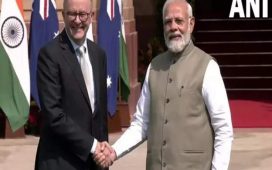He emphasised that the vision for Indian agriculture should be “globally competitive and sustainable farming“.
Highlighting the substantial returns on agricultural research investments, Pathak said, “For every one rupee investment, the return is Rs 13. Investment in R&D is profitable. The returns in the livestock sector are even more.”
The NAAS president, who also serves as the Director General of the Indian Council of Agricultural Research (ICAR), outlined several impediments in the farm sector. These include limited diversification, low-value addition, soil degradation, natural resource depletion, and increasing pest and disease issues, all exacerbated by volatile markets and climate change.
Consequently, agriculture’s share in GDP has dwindled to 19.2 per cent, with fewer people depending on the sector. “We need to have research in high impact areas, diversify agriculture, focus on climate resilient varieties, low carbon, nitrogen and energy footprints to combat climate change, and integration of alternative technologies,” Pathak said. He also advocated for promoting value addition and addressing post-harvest losses. To achieve these goals, he suggested leveraging new tools like ICT, AI, GIS, and genome editing. “There is a need to increase demand for quality and nature-friendly food with increasing income, facilitate cooperation across partners, increase funding and quality manpower,” he added.
The government has already set a 2047 target for the agri-sector and prepared action points, reflecting its commitment to transform the sector, Pathak noted.











